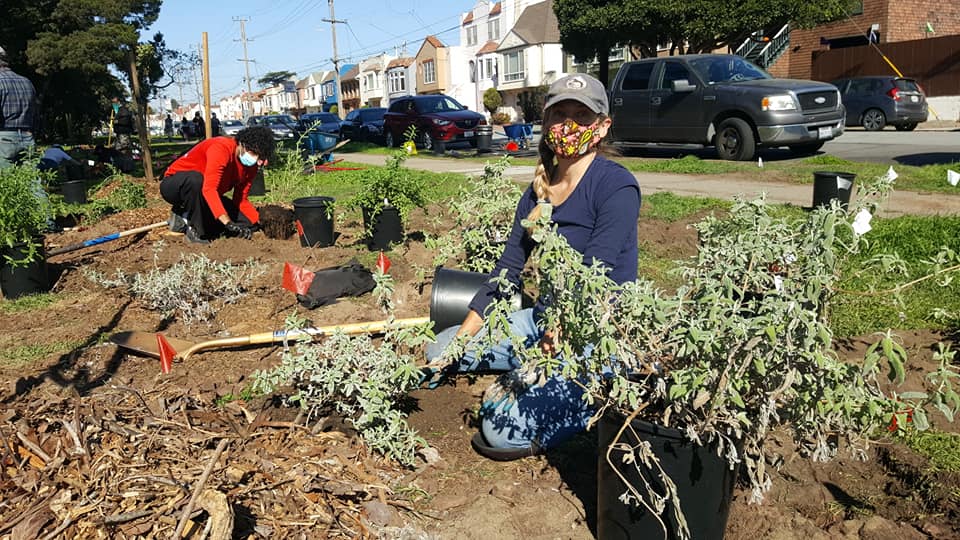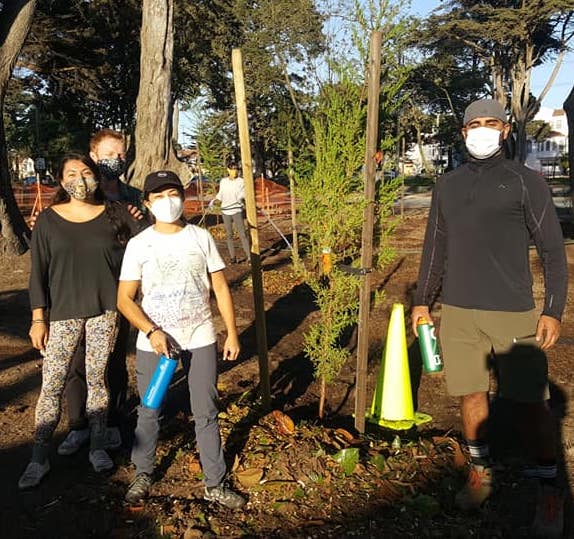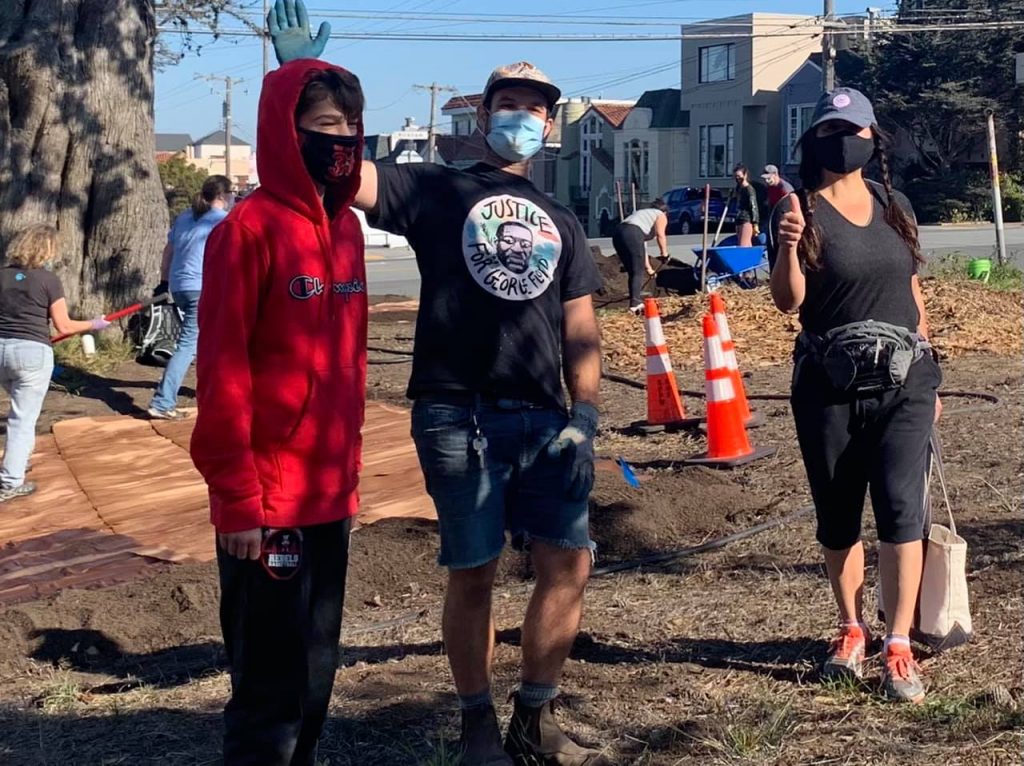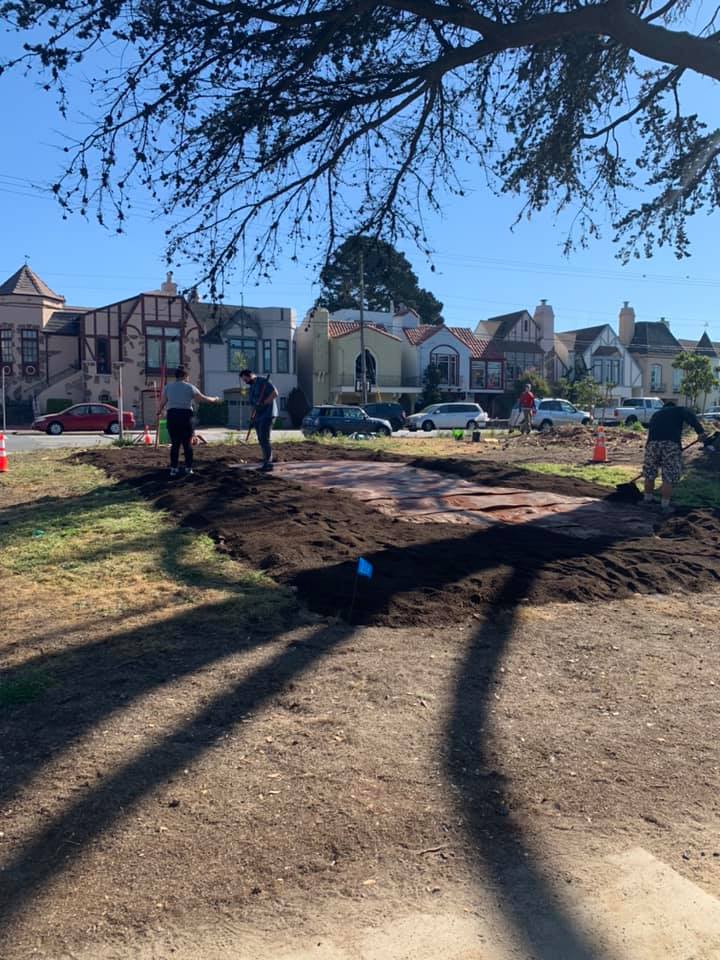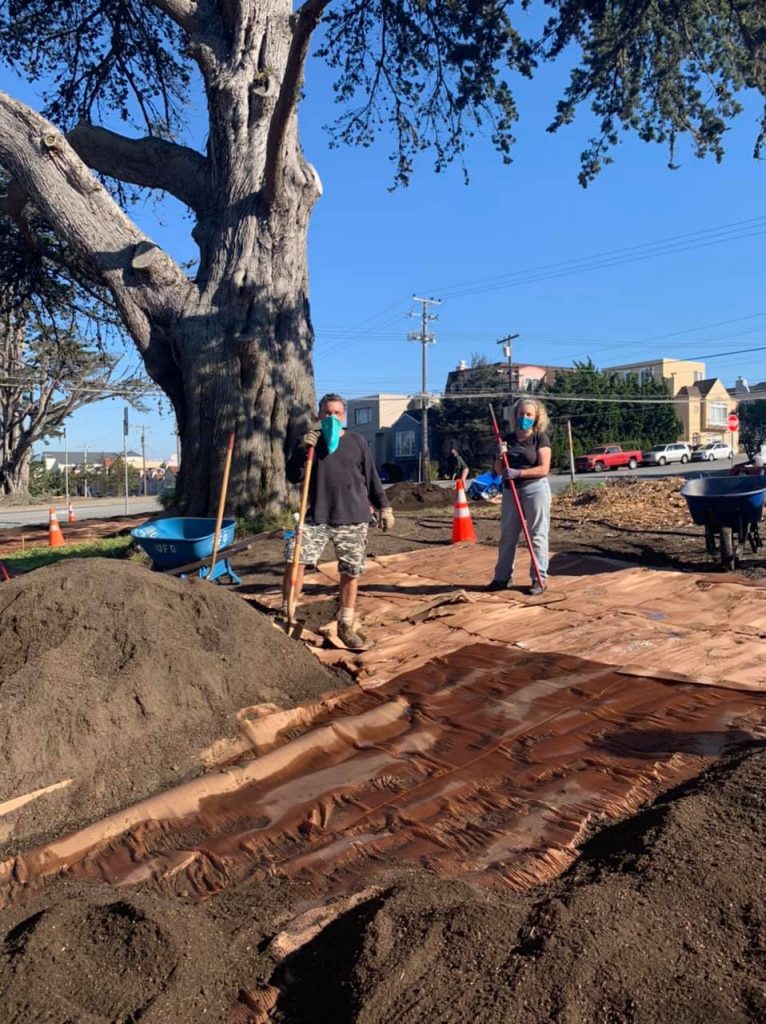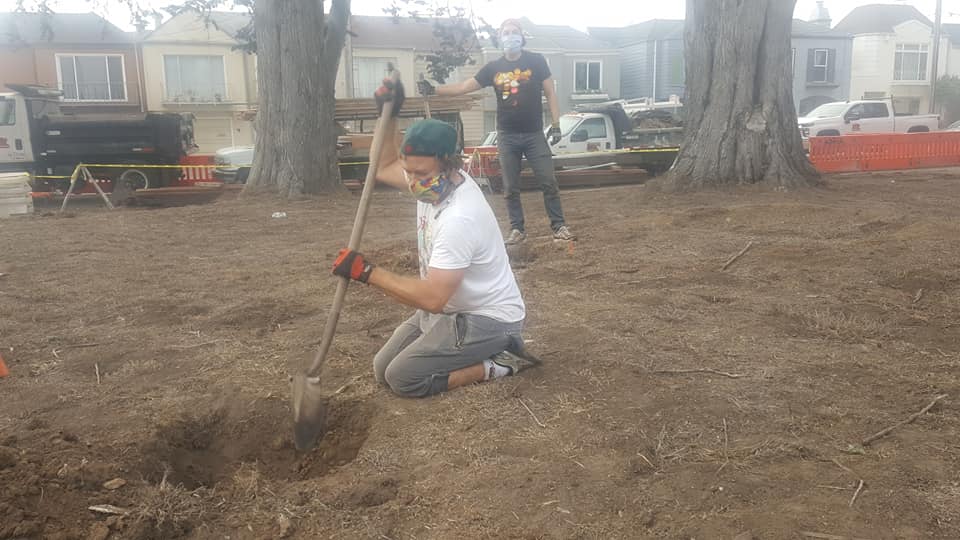Keep a lookout as you whiz along Sunset Boulevard between Santiago and Taraval Streets for the results of a new collaborative effort to create two demonstration blocks of native coastal scrub habitat. Better yet, sign up to volunteer and help out!
Climate Action Now! (CAN!) and the California Native Plant Society – Yerba Buena Chapter (CNPS) are partnering with SF Public Works Landscape Department to build habitat and promote biodiversity with local native plants, which will support local pollinators and wildlife in this green corridor that connects Lake Merced and Golden Gate Park. The group has already planted 125 native street trees and shrubs and is in the process of adding 2,500 square feet of wildflower meadows and 10,000 square feet of coastal scrub.
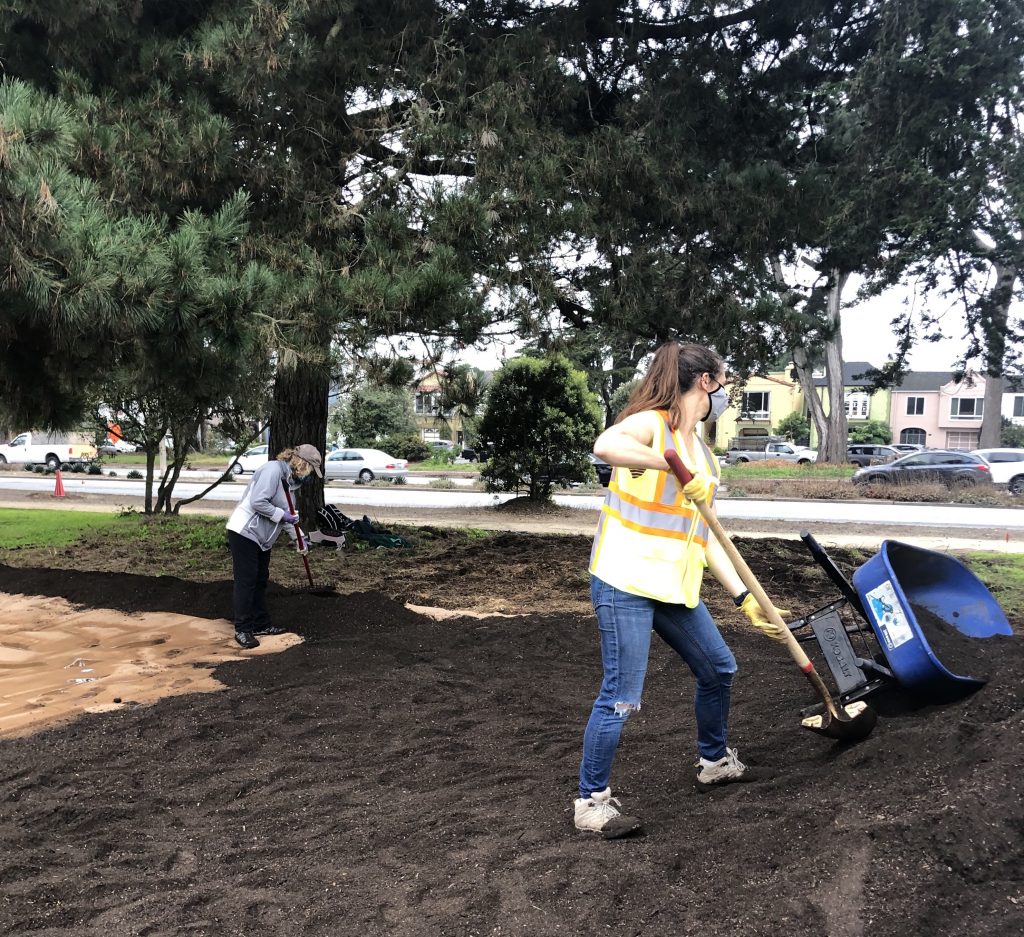
The group will be out there planting trees on Tuesdays and Fridays through the end of November and planting coastal scrub gardens on Saturdays through December 12. Sign up here for a time slot on the CAN! web site: http://climateactionnowcalifornia.org/volunteeer or email CNPS with any questions: yerba.buena.cnps.chapter@gmail.com
Sunset Boulevard Master Plan
Most people think of Sunset Boulevard as the fastest way to drive north or south through the Outer Sunset, especially if you can time those traffic lights just right. It’s a two-mile six-lane thoroughfare between Golden Gate Park and Lake Merced, which tens of thousands of drivers, bikers, walkers and people on mass transit use daily.
But it is so much more…. Sunset Boulevard represents a pivotal opportunity to create a 2-mile public space that not only provides safe recreational options but also contributes to our city’s biodiversity and carbon neutral future. It provides critical habitat for migratory and local birds, bike paths and walking trails that connect to citywide public transportation, and immersive landscape experiences for the community.
The Sunset Boulevard Master Plan, originally launched in 2018 through an effort that included residents, City agencies, and environmental groups, envisions this green belt as an opportunity to create meaningful public spaces for recreation and cultural experiences, cultivate a biodiverse landscape, and provide ecosystem services including green infrastructure to minimize water use and sequester carbon.
Climate Action Now! (CAN!) has been working since 2018 in partnership with San Francisco Public Works, San Francisco PUC, the District 4 Supervisor’s Office, and most recently with California Native Plant Society – Yerba Buena Chapter to implement the Master Plan.
Master Plan in Progress
The Master Plan encompasses many elements in addition to the native garden demonstration plots, some of which are currently in progress:
- Sunset Boulevard Reforestation Program: CAN! Is leading this multi-stakeholder Urban Forestry project to plant 2,250 trees along the Boulevard. Trees provide neighbors with a hedge that reduces noise from the road and also reduces the carcinogenic particulate pollution drift from car breaks and tires, diesel exhaust from trucks and gas pollution in general. Trees also provide shade to bikers and walkers, and capture greenhouse gases from the atmosphere, sequestering and storing carbon. Of the 38 blocks, CAN! has secured funding for 11 blocks and CAN! volunteers and staff have planted 650 trees so far. The project includes installation of irrigation systems using recycled water. Lots of work ahead to complete this work towards a thriving tree canopy. Learn more: http://climateactionnowcalifornia.org/sunsetboulevard
- Rain Gardens along Sunset Boulevard: You may have noticed landscaping installations happening on several blocks along Sunset Boulevard. This SF PUC’s Rain Garden project to improve stormwater management along the watershed. The project design is the result of extensive community input that assessed the community’s priorities for improving the local landscape, such as habitat enhancement, trail access, educational opportunities, and pedestrian amenities. The project will manage 4.0 million gallons of stormwater each year, enhance habitat for local plants and wildlife, provide community space and beautify the Sunset District, and create real life green science opportunities for local youth. Learn more: Sunset Boulevard Greenway
- Ohlone Native Garden: Brian Lease, SF Public Works gardener, has planted a demonstration garden based on Ohlone plants and practices. The garden, part of the pilot project with CNPS, is at Santiago Street between Sunset and 37th Avenues.
LEARN MORE — GET INVOLVED
1. Sign up to help CNPS and CAN! With the demonstration gardens and tree planting. Help build habitat and promote biodiversity on Sunset Boulevard!
- Plant trees with CAN! on Tuesdays and Fridays through the end of November.
- Plant coastal scrub gardens on Saturdays through December 12.
To help us follow COVID-19 prevention guidelines, please sign up for a time slot on the CAN! web site. http://climateactionnowcalifornia.org/volunteer
Email questions to: yerba.buena.cnps.chapter@gmail.com
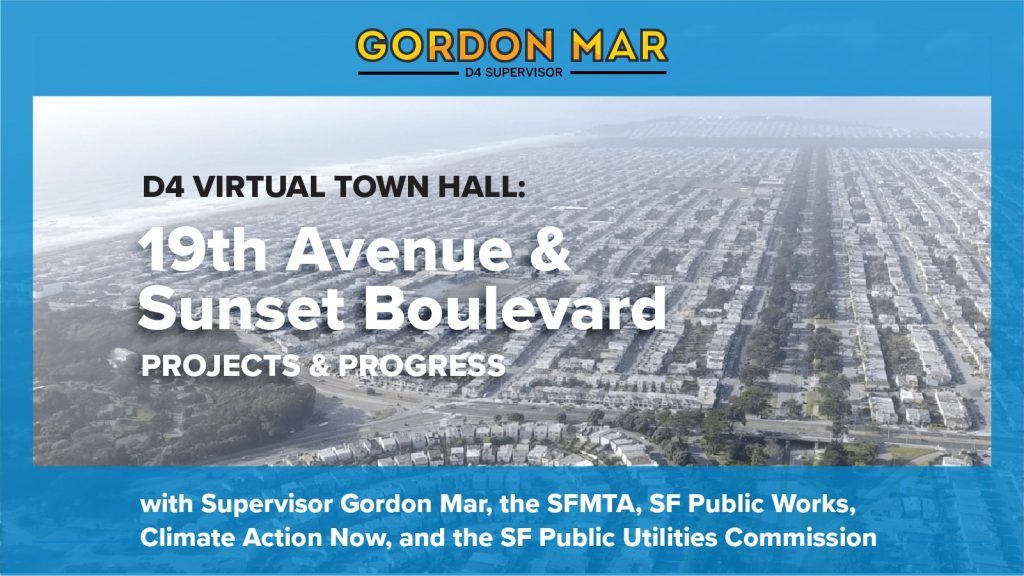
2. D4 Virtual Town Hall: 19th Avenue & Sunset Boulevard
Saturday November 7, 10 AM PST – 11 AM PST
https://www.facebook.com/events/421689808827399
Join D4 Supervisor Gordon Mar for a virtual Town Hall focused on Sunset Blvd. and 19th Avenue. This event will feature informational updates on the work underway to enhance the Sunset Blvd. greenway, as well as the construction timeframe and changes planned as part of the 19th Avenue Combined City Project and 28 19th Avenue Rapid Project.
Register to attend: https://bit.ly/3mrL4Jv
3. Check out Friends of Sunset Boulevard for more ways to get involved.
4. Read more about all the work Climate Action Now! Is doing to improve our quality of life. Since 2011, Climate Action Now! (CAN!) has worked to cultivate educational and ecological resilience through a range of environmental projects. Partnering with school communities, public agencies and private residents, CAN!’s program areas include environmental education, watershed and ecological restoration, cultural landscape preservation, green infrastructure cultivation and green jobs development.
